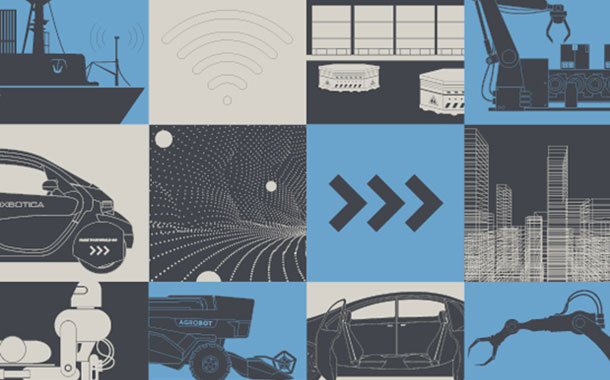Is society ready for living in an autonomous world? Ready or not, it’s here. In fact, it’s been with us for a while. The better question for those of us in the insurance industry to ask is whether we’re ready for it. While society is getting acquainted with the advantages and the risks of piloting and adopting autonomy and its implications, we need to be ready to address the risks and liabilities associated with it.
As with all technological advances, before products and services hit the consumer market, they operate in some capacity in industry. The same is true with autonomous machines, artificial intelligence and robotic technology, which is already in play to varying degrees in logistics, construction, agriculture, professional services, manufacturing transportation—and of course the most widely talked about, self-driving vehicles. The rapid advancement of technology has been so pervasive that, in 2017, the North American Industry Classification System (NAICS) updated the industry classifications to incorporate the impact of industries engaged in the production of advanced technologies. So not ‘new’; just new to us.
There’s no question that our clients are pioneering the use of advanced technologies such as robotics and autonomous machines. But there’s no denying that it presents a shift in liability and a challenge to our legal systems, which have historically focused on causation – what caused a third party injury, business interruption, etc., to occur and who is responsible.
Until recent times, machines have typically been built for a specific reason with a defined deliverable – a tool for a person to use. The machine was a “dumb machine” that could not learn from itself or from other machines. It had no level of personal accountability because it was incapable of any type of autonomous action. When there was a defect, it could generally be tracked back to either defective programming or incorrect operation of the machine. This allowed for an easier identification of liability when a machine malfunctioned.
Today’s “smart” or autonomous machines have the capability to learn from themselves or even other machines. The more autonomous they become, they act less upon preset instructions and more on a set of rules that may never have anticipated the specific circumstances under which the machine might actually be operating. This makes it more difficult to attribute their behavior to the human programming and design or to what the machine learns on its own.
Autonomous machines will challenge existing models of liability. Most of the world’s legal systems focus on causation when determining who is responsible for a loss. It will be increasingly difficult to determine if the design of the machine was responsible for the cause of loss or if the machine itself was the cause. This creates a gray area of liability, challenging our traditional coverages.
When we look at how the law interprets it, our clients who are working to advance an autonomous society, we see clearly the potential for elevated risk and runaway legal defense costs particularly from casualty and professional liability because they are intertwined in the manufacturing of the autonomous machine.
We truly believe that, not only will autonomous technology fundamentally change how the world will move people and goods over the next 20 years; it’s going to improve safety, increase mobility and transform lives, businesses and public services. Just think of the advantages:
Undoubtedly, autonomous robotic technology, and autonomous vehicles in particular, will fundamentally change how the world moves people and goods over the next 20 years. And the potential is big. Autonomy has the potential to greatly improve safety, increase mobility and transform lives, businesses and public services.
Because we believe so strongly in the societal good of advancing autonomy, we, at XL Catlin, challenged ourselves to develop an insurance solution to support the greater adoption of autonomous technologies, particularly in insuring pilot projects that are helping pioneer autonomous technology in business and industry.
We have learned, working with some of these early adopters, that while there are no two similar uses of autonomy and each requires a tailor made approach, there is a real need for a structured solution spanning our expertise across multiple classes of insurance. As a result, we’ve launched an initiative to provide tailored, multi-line coverage for the risks associated with designing, developing, testing and implementing autonomous systems.
Given our new insights into autonomy gathered from our partnership with Oxbotica and our multiline insurance products, XL Catlin is well positioned to take on the risk of the autonomous revolution and ready to be the market leader for insuring autonomy. As more of our clients start incorporating autonomous technologies into their operations, in one form or another, we’ll be ready.
For autonomy to advance there has to be companies willing to take on the risks of autonomous technologies, especially as they evolve. It’s an assumption of risk faced with challenges about conventional concepts about liability and causation.
By: Nancy Bewlay, Global Chief Underwriting Officer, Casualty, XL Catlin




